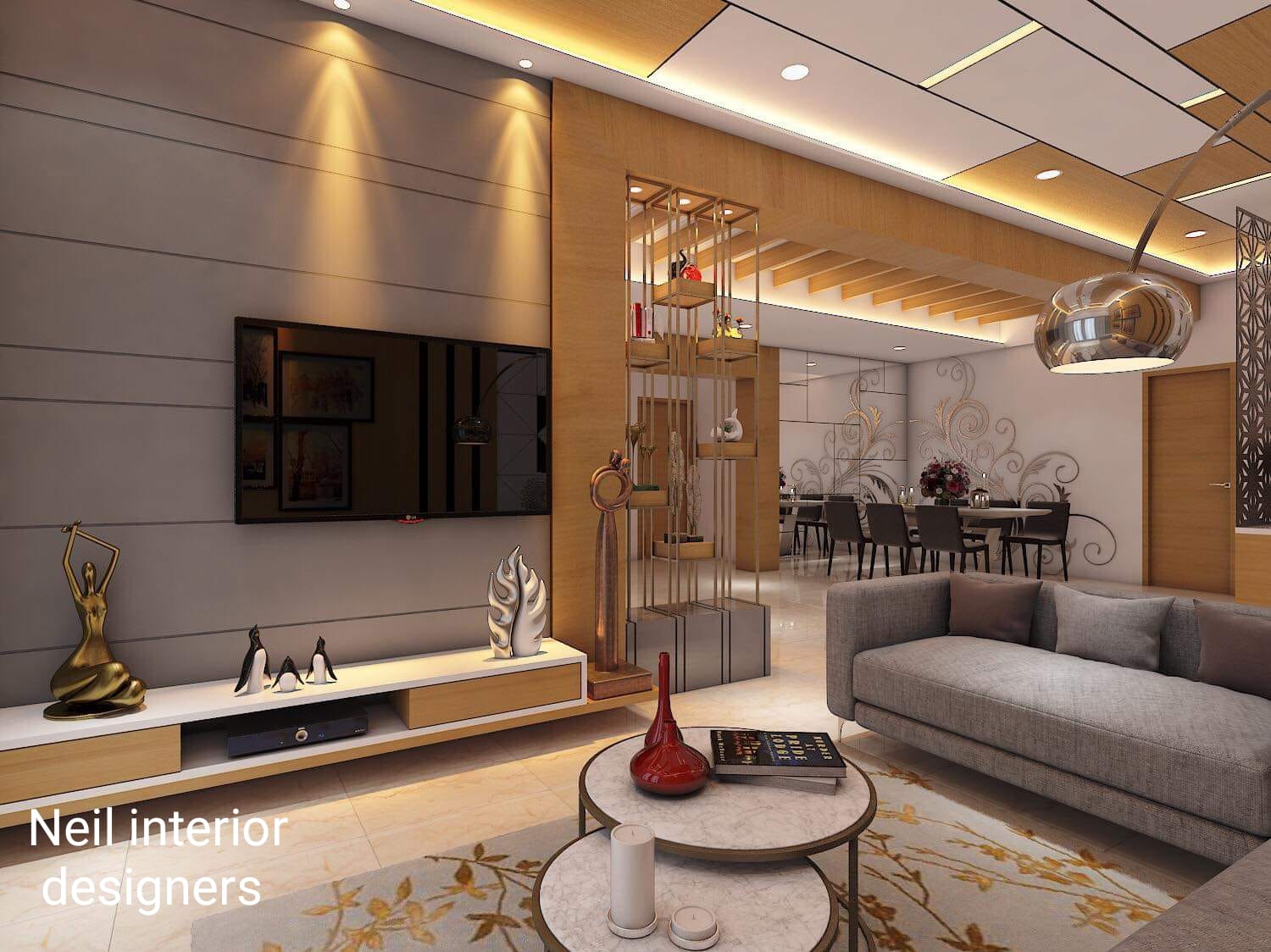Decorating a living room in an Indian home involves balancing traditional charm with modern aesthetics while ensuring the space is functional and reflective of personal style. Here’s a detailed, step-by-step guide:
Step 1: Measure Your Space
- Measure Dimensions: Measure the length, width, and height of your living room using a tape measure.
- Note Features: Record the positions of doors, windows, electrical outlets, and any built-in features like niches or pillars.
- Sketch a Floor Plan: Create a simple floor plan on graph paper or using a digital tool. This helps you visualize the space and plan furniture placement.
Step 2: Establish Your Intentions
- Define the Purpose: Decide if your living room will be for relaxing, entertaining, family time, or a combination.
- List Activities: Consider activities like watching TV, reading, hosting guests, or children’s play.
- Prioritize Needs: Based on activities, prioritize what furniture and features are essential (e.g., a TV unit for entertainment, a comfortable sofa for lounging).
Step 3: Find Your Aesthetic
- Identify Your Style: Choose a style that resonates with you – traditional Indian, contemporary, minimalist, eclectic, etc.
- Gather Inspiration: Look through magazines, home décor websites, Pinterest, or even Bollywood movies for ideas.
- Mix and Match: Don’t be afraid to blend styles (e.g., modern furniture with traditional Indian textiles).
Step 4: Make a “Room Board”
- Collect Images: Gather pictures of furniture, colors, fabrics, and decor items that you like.
- Create a Visual Board: Use a physical board with cut-out images or a digital tool like Pinterest.
- Visualize the Design: This helps you see how different elements will look together and make cohesive decisions.
Step 5: Choose a Cohesive Color Palette
- Select a Primary Color: Choose a dominant color for walls or large furniture pieces. Popular Indian choices include rich hues like maroon, mustard, or earthy tones.
- Add Secondary Colors: Pick complementary colors for other large elements like rugs, curtains, or accent chairs.
- Incorporate Accent Colors: Use bold colors for smaller items like cushions, throws, and decor pieces to add vibrancy.
- Sample Swatches: Get paint or fabric swatches to see how the colors look in your room’s lighting.
Step 6: Get Shopping
- Set a Budget: Determine how much you’re willing to spend on each item.
- Prioritize Big Purchases: Start with essential items like sofas, coffee tables, and TV units.
- Quality Over Quantity: Invest in quality pieces that will last, especially for frequently used items like sofas.
Step 7: Select Complementary Furniture
- Choose Additional Pieces: Select side tables, armchairs, and bookshelves that match your main furniture.
- Consider Scale and Proportion: Ensure each piece fits well in the room without overcrowding.
- Functional Placement: Arrange furniture to facilitate conversation and easy movement.
Step 8: Choose the Right-Sized Rug
- Measure for Fit: The rug should be large enough to fit under all the front legs of your furniture, creating a cohesive look.
- Match Your Style: Select a rug that complements your color palette and style. Indian homes often use traditional rugs with intricate patterns.
- Add Texture and Warmth: A good rug adds warmth and can serve as a focal point in the room.
Step 9: Decorate Your Surfaces
- Balance Decor Items: Use decorative items like vases, candles, books, and sculptures on coffee tables, side tables, and shelves.
- Avoid Clutter: Arrange items thoughtfully to avoid overcrowding surfaces.
- Personal Touches: Include family photos, travel souvenirs, or heirlooms for a personalized touch.
Step 10: Incorporate Varied Textures
- Mix Fabrics: Use different textiles like silk, cotton, velvet, and wool for cushions, throws, and curtains.
- Combine Materials: Blend wood, metal, glass, and ceramics in your furniture and decor.
- Add Depth: Varied textures add depth and visual interest to the room.
Step 11: Adorn Your Walls
- Choose Wall Art: Select paintings, prints, or traditional Indian tapestries that match your aesthetic.
- Hang Mirrors: Use mirrors to create the illusion of more space and reflect light.
- Install Shelves: Add shelves for displaying books, plants, or decorative items. Ensure they are securely mounted.
Step 12: Bring in Greenery
- Select Plants: Choose indoor plants like money plants, ferns, or snake plants that are easy to maintain.
- Use Pots and Planters: Place plants in decorative pots that match your decor.
- Distribute Evenly: Spread plants around the room to bring life and freshness to different areas.
Step 13: Add Multi-Functional Pieces
- Opt for Versatile Furniture: Use pieces like sofa beds, storage ottomans, or nesting tables that serve multiple purposes.
- Maximize Space: Multi-functional furniture helps save space and adds flexibility to your living room.
- Ensure Comfort and Style: Make sure these pieces are comfortable and fit seamlessly with your overall design.
By following these detailed steps, you can create a living room that is not only functional and stylish but also deeply personal and reflective of your unique taste, blending the rich traditions of Indian design with modern living.
